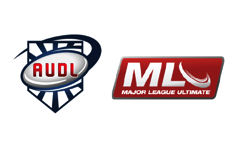December 10, 2012 by Charlie Eisenhood in Analysis, Opinion with 6 comments
 We’ve heard about the American Ultimate Disc League and Major League Ultimate from a lot of perspectives. But, to this point, we haven’t heard from perhaps the most important figure in both leagues: the money.
We’ve heard about the American Ultimate Disc League and Major League Ultimate from a lot of perspectives. But, to this point, we haven’t heard from perhaps the most important figure in both leagues: the money.
Last week I had the opportunity to talk with a potential investor in professional ultimate who is considering either the purchase of an AUDL franchise or the purchase of a $125,000 share of the MLU. The man — who I’ll call “Jim” — is torn between the two organizations, seeing both benefits and drawbacks of each. His uncertainty highlights the fundamental difference between the leagues — probably the difference that will determine their long-term success.
Jim, like any savvy investor, takes a numbers-focused, realist approach to investing in ultimate. He says that he is prepared to lose money for a couple of years, but wants to be sure he is in the league that is best positioned to offer a return over time.
He likes the MLU because of its leadership and its bold vision, but is concerned about the league’s complicated organizational structure and heavy reliance on shared revenue and top-down control. The league’s front office has control over team names, player contracts, transportation, stadium rentals, basically everything. Investors serve only as managers of their team. That takes a lot of the fun out of it, explained Jim, adding that he is concerned that investors won’t have an incentive to work hard.
Avoiding that “freeloader” effect is something that draws him to the AUDL. Since each franchise is individually owned and operated, every owner has to invest time, money, and energy into their team to develop the brand and make it successful. But the AUDL has faced an incentive problem of its own, since the league front office had no real financial interest in building the existing franchises. That appears to be changing as an elected board of team owners is now controlling the league. But Jim won’t be satisfied until that transfer of power is made official. Even then, he has major reservations because of the league’s prominent challenges. The turmoil of the first season, summed up by the league’s lawsuit against the Connecticut Constitution and the Rhode Island Rampage, is a big concern.
As I discussed on the radio show two weeks ago, the real distinction between the two leagues is that the AUDL is built on more of a capitalist model while the MLU is built on a socialist one. In the AUDL, owners are left basically on their own to operate their franchise as they see fit. They can splurge on comfortable travel for their players or they can send them to road games in vans. They can pay their players as much or as little as they like. Profits and losses are theirs to keep. But owners still have to rely on the other owners to show up to games, work hard, and grow the league. They have little control over the league’s development.
In the MLU, President Jeff Snader and the rest of the core leadership believe they can replicate the success of the Philadelphia Spinners’ season in the AUDL across the league. They are asking investors to fund the league and allow them to determine the direction of the organization. This gives them a huge up-front budget, which allows for more aggressive marketing. The centralized planning also helps bring down costs by enabling volume discounts on travel and other team services.
But the greater stability of the MLU also means that the teams rise and fall together. If one franchise is underperforming, it doesn’t just disappear like in the AUDL (see Colombus Cranes). The league has to handle the unwind and attempt to sell off merchandise and other team materials. The centralized model is also likely to reduce innovation at the team level.
Jim understands these tradeoffs, but isn’t any closer to making a decision about where to put his money. Whereas many Ultimate players seem to have written off the AUDL because of their early struggles, the league has taken big strides so far in the off season — and investors still see it as a potential winner. Certainly there is an appeal to being a true team owner, something you can’t be in the MLU.
At the end of the day, investing in professional sports is a very risky bet. The organizational models don’t change the fact that both leagues need to get fans into seats if they want to succeed. It takes many years and lots of struggle to get to that point — Major League Lacrosse has been around for over ten years and, in many markets, is still struggling, despite a prominent ESPN deal.
The AUDL and MLU won’t be able to compete for very long. If Pro Ultimate is to succeed, there will be just one league. But who will emerge as the front-runner? Jim would sure like to know.